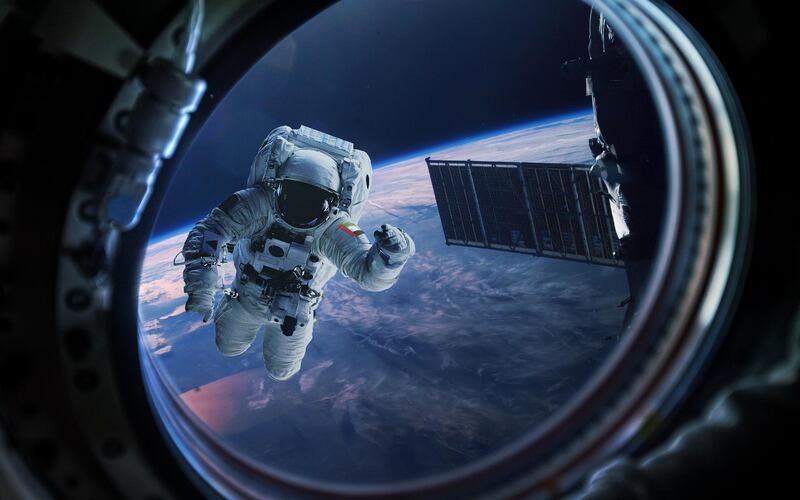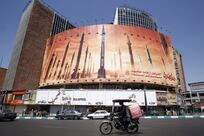If you had a flying carpet, where would you go? Childhood readers of One Thousand and One Nights might often have day-dreamed about this question – along with some of us adults – but this prediction of the future is not as outlandish as it once was.
This week US President Donald Trump has been busy tweeting out a "Mars Awaits" logo in support of the US Space Force – one of his pet projects. It is a rare area of agreement between Mr Trump and I – that space travel is exciting and imminent.
It's also the week when the Parkar Space Probe was launched to "touch the sun". And this month we had the announcement of the discovery of water on Mars, suggesting potential life or at least the possibility of sustaining it.
Nasa thinks we could be living on the moon in eight years. SpaceX, founded by Elon Musk, aims to send a manned mission to Mars by 2024.
The UAE's own Space Agency just turned four years old and an Emirati astronaut will be sent to space next April. Meanwhile, there is talk of an entire colony built by the UAE on Mars by 2117. With medical advances and longer life spans, we could well live to see it.
And while Mr Trump might be concentrating on the branding of future missions, for Muslims contemplating space travel, there are questions of religion, ethics and practicality to be addressed.
Let’s start with that flying carpet. If you’re a Muslim in space, how could you face your prayer mat towards Makkah? This, of course, brings further struggles, how do you prostrate on the ground in the absence of gravity? If you have multiple sunsets in the course of 24 hours how do you know when to pray or in Ramadan, when to fast? Even on earth, the sighting of the moon to declare Eid is a bone of contention.
In fact, there are all sorts of questions about practical rituals. In 2007, Malaysian authorities issued guidance about how their Malaysian astronaut could navigate such dilemmas while on the International Space Station. But expectations of life in space – including the realistic possibility of long term habitation – have come a long way since then. And the questions keep growing.
___________________________
Read more from Shelina Janmohamed:
Dear Sondos Al Qattan: Please don't hide behind your hijab
Make your selfies the souvenir, not the experience, at this year's Hajj
It is none of Boris Johnson’s business what any woman wears
___________________________
Different religions will need to dig deep into their theology to tackle the dilemmas their astronauts will face.
Islamic theology is well-suited to support space travel, exploration and habitation. After all, the Quran includes the verse: "All praise belongs to God, Lord of the Worlds." In addition, the Quran dangles the challenge for humanity to cut through the boundaries of inner space and reach other planets and galaxies. It employs imagery that hints at rockets and space travel – but only with Divine permission.
If it’s true that within the next century humanity will be living on Mars, you might want to build a mosque. Experts are already designing homes that can be 3D printed once people arrive on Mars, to save on transportation. I can envisage 3D printed mosques with rotating prayer spaces that constantly adjust themselves to remain pointed at Makkah.
The most fascinating questions will be ethical ones about interactions with other life forms. What’s the right etiquette when you meet a Martian? Could they have a religion? Could you marry one?
In fact, how we manage our morality and rituals in other worlds has long been a fascination for Muslim authors, whose efforts at science fiction stretch all the way back to Ibn Tufail in the 12th century who created a character on an island who came into existence through "spontaneous generation".
In the early 20th century a female Muslim Indian author, Rokeya Sakhawat Hossain, used science fiction to depict a world where women were in charge and men were locked indoors, having used technology to change the balance of power. And of course the Arabian Nights also sent Sindbad into new worlds with strange creatures.
But these forms of science fiction and our imaginings about life in outer space aren’t just dreams any longer. To quote from the 1987 hit single Star Trekkin', "it’s life Jim, but not as we know it". The question now is, what will life in space be like for us and the creatures we meet?
Shelina Janmohamed is the author of Love in a Headscarf and Generation M: Young Muslims Changing the World





